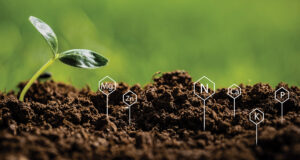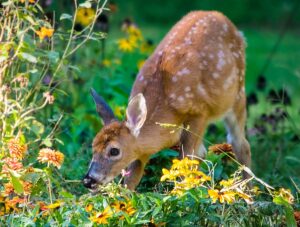‘Tis the season for garden seed catalogues. If you’re like me, you are perusing through catalogues that advertise 15 varieties of watermelon, 50 varieties of peppers and even more tomato varieties. They all look amazing and make claims of vigorous, great flavor and disease resistance. So, which do you choose?
My solution is to ask an expert who has been gardening for decades. Chuck Voigt, now retired, worked as an academic at the University of Illinois Urbana-Champaign specializing in vegetables and herbs. He helped create what is considered the vegetable gardening bible among Master Gardener volunteers – Vegetable Gardening of the Midwest.
Chuck says there are some must-have varieties for the backyard gardener and already trialed them for us.
Onions
Kelsae Giant onion holds the record for the largest. At 15 pounds and 33 inches in diameter, these onions are not only unique but have a mild, sweet flavor and store well.
The Ailsa Craig commonly reaches 5 pounds, is easy to start from seed and has a mild, sweet flavor.
Onions are usually started by sets (dry, immature bulbs) and can be planted as early as late March. It is important to keep them weeded so roots aren’t competing for resources. They can be grown as green onions for earlier harvest or dry bulbs for storage. Use larger sets for green onions and space them an inch deep and almost touching each other. For bulb onions, plant smaller sets an inch deep and about 3 inches apart. Hilling, which means mounding the soil up around the green onions, produces the white stem we commonly associate with green onions.
Greens
Hybrid Savoy cabbage originated in Italy and grows 3 to 4 pounds. Its ornamental leaves are lacy with a sweet flavor and delicious added to salads. As a cool season vegetable, transplant it about a foot apart in early spring; it can tolerate a late frost.
Melons
Sugar Cube muskmelon weighs no more than 2 pounds. Its salmon-orange flesh is tender, juicy and exceptionally sweet.
Yellow Doll watermelon reaches 5 to 7 pounds and grows on compact vines. The flesh is energetic yellow with a dense texture and sweet flavor.
Harvest Moon is a seedless watermelon that reaches 18-20 pounds with an ornamental rind of dark green with yellow splotches. The pinkish flesh is crisp and juicy, yielding four to five melons on a short vine.
Watermelons are a warm-season crop and should be planted after any chance of frost. Although most require a lot of space, the varieties listed are perfect for the backyard garden. Started by seed in pots or in the ground, these can be a rewarding harvest.
Turnips
Gil Feather is a turnip-rutabaga hybrid with a sweet, creamy taste and doesn’t get woody. Delicious despite their reputation among children, turnips and rutabaga are cool season crops. Rutabaga usually requires four more weeks of growth until crop maturity. These crops should be planted in early spring and can be planted again in late summer to get a crop that matures in the fall. Some of the outer leaves can be harvested for greens without compromising the root crop. Harvest them when they are 3 to 5 inches in diameter for best quality.
Leeks
Leeks are easy to grow and can be directly seeded into the ground. They have a milder taste than onions and can be eaten raw or cooked. Grow leeks 4 inches apart. As summer starts and the leeks are pencil-size, hill by adding soil at the base of the plants to get the white stems – as with green onions. Although leeks are long season crops, some varieties mature faster than others.
Go ahead. Visit your local garden center or order from a favorite catalog, and don’t be afraid to try new varieties.










